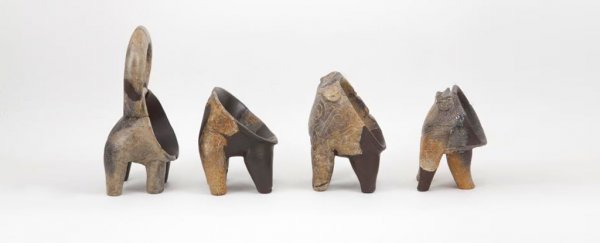Residue on 7,200 year old pottery found in Croatia has pushed back the dawn of cheese making in the Mediterranean.
The find resets the timeline of agriculture in the region, with fermented dairy products being made a mere five centuries after milk was first stored. But its innovation was more than just a culinary milestone for dairy connoisseurs – it could have been a life saver.
A team of researchers from across the US, the UK, and Croatia analysed ceramic fragments excavated from two Neolithic sites on the Dalmatian Coast for indications of the food items they once contained.
Archaeological data shows people have been growing crops and raising livestock in the region for roughly 8,000 years.
Key to understanding the cultural shifts during this time are the bits of pottery they left behind. Not only do the ceramic pieces hold onto traces of material it came into contact with, their structure can say a lot about influences of aesthetics and design.
One example is something called Impressed Ware, named for the simple shell-like impressions used to decorate the clay. They form one of the earliest forms of pottery in the area.
The researchers already knew Impressed Ware pottery from the area had been found with chemical signatures indicating they were used to hold milk, suggesting that dairy was a part of the Neolithic diet since at least their settlement.
This isn't all that surprising. While many adults developed an intolerance to lactose, milk could still nourish young children. Storing it in pottery could have been an important step in helping get through tough times when food was scarce.
"First, we have milking around, and it was probably geared for kids because it is a good source of hydration and is relatively pathogen-free," says Sarah McClure from Pennsylvania State University.
"It wouldn't be a surprise for people to give children milk from another mammal."
Within centuries, Impressed Ware gave way to a variety of pottery fashions. One fancy example is called Danilo, often inscribed with designs that link it with other cultures across the Mediterranean.
This was a little like the Tupperware of the area, with plates and bowls and storage containers. Interestingly, specific types of Danilo pottery have been associated with certain foods.
The highly polished Figulina type, for example, makes up just five percent of all Danilo pottery in the area, but always contains traces of milk.
McClure and her team investigated another type of Danilo pottery, called Rhyta. They tend to be round, have little feet, and are often shaped like people or animals.
Analysis of the carbon isotopes on the inner surface of unwashed Rhyta pottery sherds indicated many had been used to hold not only milk products, but dairy of a more fermented variety, such as cheese and yoghurt.
"Cheese production is important enough that people are making new types of kitchenware," says McClure.
Fragments of pottery were also found to contain patterns of holes, indicating a potential function as a strainer for the cheese-making process.
Three of the four 'sieves' analysed by the team showed evidence of being used for this purpose.
Radiocarbon dating of seeds and bones in the surroundings indicated these sieves and Rhyta fragments were around 7,200 years old, putting them among the oldest confirmed examples of cheese containers in the world.
Similar cheese-straining sieves have been found dating back around 8,000 years in Europe, though nobody has been able to prove they were used for this purpose.
"This is the earliest documented lipid residue evidence for fermented dairy in the Mediterranean region, and among the earliest documented anywhere to date," the researchers write in their report.
It's not clear whether the footed Rhyta vessels were meant to represent livestock. But picturing Neolithic farmers handing out cheese in cow-shaped cups to their young children is priceless.
Cheese making represents a significant step forward in the advance of human culture.
What we take for a tasty after-meal snack that pairs well with a nice Merlot once helped our ancestors push into new lands, taking greater risks by carrying preserved foods.
Turning milk into cheese also helped lower its lactose enough for adults to eat, providing a nutritious food source for the Neolithic farmer on the go.
This research was published in PLOS ONE.
